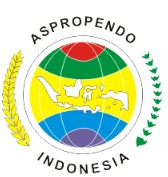Determinan Minat Menggunakan Uang Elektronik Pada Aplikasi Shopeepay
Sebuah Persepektif Technology Accepyance Model (TAM)
DOI:
https://doi.org/10.37304/ej.v3i2.4975Keywords:
intentions to use electronic money on shopeepay, technology acceptance model, perceived ease of use, perceived usefulnessAbstract
This research adopted the Technology Acceptance Model to examine the factors affecting the intentions to use electronic money on digital application shopeepay. The purpose of this research are to examine the effect of perceived ease of use and perceived usefulness on the intentions to use electronic money on digital application shopeepay. The sample in this study were undergraduate students of the economic education study program at the University of Palangka Raya who were active in the even semester of the 2021/2022 academic year. The method of data collection is survey using questionnary as instrument of the research. The ammount of the sample was 70. The data was analysed using Structural Equation Modelling- Partial least square (SEM-PLS) with SmartPLS 3.0. The result of research finds perceived ease of use and perceived usefulness has a positive effect on the intentions to use electronic money on digital application shopeepay.
Downloads
References
Aksami, N. M. D., & Jember, I. M. 2019. Analisis Minat Penggunaan Layanan E-Money Pada Masyarakat Kota Denpasar. E-Jurnal Ekonomi Pembangunan Universitas Udayana, 8(10), 2439–2470.
Ariningsih, E. P., Wijayanti, W., & Prasaja, M. G. 2022. Intention to Use E-wallet Dilihat dari Perceived Usefulness, Perceived Ease of Use, Perceived Security, dan Trust. Jurnal Maksipreneur: Manajemen, Koperasi, dan Entrepreneurship, 11(2), 227–238. https://doi.org/10.30588/JMP.V11I2.916
Darista, S. M. ., & Mujilan. 2021. Pengaruh Persepsi Kegunaan, Persepsi Kemudahan, Persepsi Kepercayaan Dan Persepsi Risiko Terhadap Minat Penggunaan Aplikasi Ovo Sebagai Alat Pembayaran E-Money. Jurnal Riset Manajemen dan Akuntansi, 09(01), 27–37. Diambil dari https://www.researchgate.net/publication/353546580_Pengaruh_Persepsi_Kegunaan_Persepsi_Kemudahan_Persepsi_Kepercayaan_dan_Persepsi_Risiko_Terhadap_Minat_Penggunaan_Aplikasi_OVO_sebagai_Alat_Pembayaran_E-Money
Davis, F. D. 1989. Perceived usefulness, perceived ease of use, and user acceptance of information technology. MIS Quarterly: Management Information Systems, 13(3), 319–339. https://doi.org/10.2307/249008
Dehghan, F., & Haghighi, A. 2015. E-money regulation for consumer protection. International Journal of Law and Management, 57(6), 610–620. https://doi.org/10.1108/IJLMA-06-2014-0042
Fitriana, A., & Wingdes, I. 2017. Analisis TAM Terhadap Faktor-Faktor yang Mempengaruhi Konsumen Menggunakan e-Money Indomaret Card di Pontianak. Techno.Com, 16(4), 401–410. https://doi.org/10.33633/TC.V16I4.1515
Ghozali, I., & Latan, H. 2015. Partial Least Squares: Konsep, Teknik dan Aplikasi SmartPLS 3.0 untuk Penelitian Empiris (2 ed.). Semarang: Badan Penerbit Universitas Diponegoro.
Glady, J. E., & Rantung, R. 2020. ANALISIS DETERMINAN NIAT MENGGUNAKAN E-MONEY DI KALANGAN MILLENNIALS DENGAN PENDEKATAN UTAUT. Klabat Journal of Management, 1(1), 90–104. https://doi.org/10.31154/KJM.V1I1.451.90-104
Jogiyanto, H. 2007. Sistem Informasi Keperilakuan. Yogyakarta: Andi Offset.
Legi, D., Legi, D., & Saerang, R. T. 2020. The Analysis Of Technology Acceptance Model (Tam) On Intention To Use Of E-Money In Manado (Study On: Gopay, Ovo, Dana). Jurnal EMBA : Jurnal Riset Ekonomi, Manajemen, Bisnis dan Akuntansi, 8(4), 624–632. https://doi.org/10.35794/EMBA.8.4.2020.30951
Legris, P., Ingham, J., & Collerette, P. 2003. Why do people use information technology? A critical review of the technology acceptance model. Information and Management, 40(3), 191–204. https://doi.org/10.1016/S0378-7206(01)00143-4
Octabriyantiningtyas, D., Suryani, E., & Jatmiko, A. R. 2019. Modeling Customer Satisfaction with the Service Quality of E-Money in Increasing Profit of PT. Telekomunikasi Indonesia. Procedia Computer Science, 161, 943–950. https://doi.org/10.1016/J.PROCS.2019.11.203
Priambodo, S., & Prabawani, B. 2016. Pengaruh Persepsi Manfaat, Persepsi Kemudahan Penggunan, Dan Persepsi Risiko Terhadap Minat Menggunakan Layanan Uang Elektronik (Studi Kasus Pada Masyarakat Di Kota Semarang). JIAB, 2(2), 127–135. Diambil dari https://www.neliti.com/id/publications/189335/pengaruh-persepsi-manfaat-persepsi-kemudahan-penggunan-dan-persepsi-risiko-terha
Rahmatika, U., & Fajar, M. A. 2019. Faktor - Faktor Yang Mempengaruhi Minat Penggunaan Electronic Money: Integrasi Model Tam – Tpb Dengan Perceived Risk. Nominal: Barometer Riset Akuntansi dan Manajemen, 8(2), 274–284. https://doi.org/10.21831/nominal.v8i2.26557
Rivai, V., Veithzal, A. P., & Idroes, F. N. 2007. Bank and Financial Institution Management. Jakarta: PT. Raja Grafindo. Diambil dari https://opac.perpusnas.go.id/DetailOpac.aspx?id=274752
Sari, S. W. 2021. Faktor-Faktor Yang Mempengaruhi Minat Nasabah Bank Syariah Mandiri Menggunakan Produk E-Money. Universitas Islam Indonesia.
Setiawan, W. 2020. Temuan Survei, ShopeePay Ungguli Dompet Digital Lain. Diambil 14 April 2022, dari https://mix.co.id/marcomm/news-trend/temuan-survei-shopeepay-ungguli-dompet-digital-lain/
Syafi’i, A., & Widijoko, G. 2016. Determinan Minat Individu Menggunakan Uang Elektronik: Pendekatan Modifikasi Technology Acceptance Model | Syafi’i | Jurnal Ilmiah Mahasiswa FEB. Jurnal Ilmiah Mahasiswa FEB, 3(2). Diambil dari https://jimfeb.ub.ac.id/index.php/jimfeb/article/view/2014
Taufan, A., & Yuwono, R. T. 2019. Analysis of Factors That Affect Intention to Use e-Wallet through the Technology Acceptance Model Approach (Case Study: GO-PAY). International Journal of Science and Research (IJSR), 8(7). Diambil dari https://www.researchgate.net/publication/335028066_Analysis_of_Factors_That_Affect_Intention_to_Use_e-Wallet_through_the_Technology_Acceptance_Model_Approach_Case_Study_GO-PAY
Tazkiyyaturrohmah, R. 2018. Eksistensi Uang Elektronik Sebagai Alat Transaksi Keuagan Modern. Muslim Heritage, 3(1), 21–39.
Ulurrosyad, M. F., & Jayanto, P. Y. 2020. Faktor-Faktor Dalam Menggunakan E-Money (Gopay) Pada Masyarakat Muslim di Kota Semarang. Moneter - Jurnal Akuntansi dan Keuangan, 7(1), 105–112. https://doi.org/10.31294/MONETER.V7I1.7634
Venkatesh, V., & Davis, F. 2000. A Theoretical Extension of the Technology Acceptance Model: Four Longitudinal Field Studies. Management Science, 46, 186–204. https://doi.org/10.1287/mnsc.46.2.186.11926
Wiradimaja, M. F., & Rikumahu, B. 2019. Pengaruh Faktor Risiko dan Faktor Kepercayaan terhadap Adopsi Electronic Wallet Menggunakan Model TAM (Studi Kasus: E-Wallet Ovo di Kota Bandung). Proceeding of Management, 6(2), 2457–2465. Diambil dari https://openlibrarypublications.telkomuniversity.ac.id/index.php/management/article/view/9825









